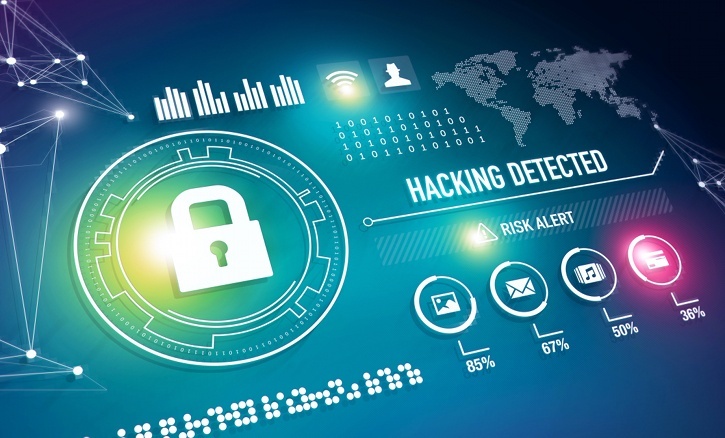Secure Boot: Limitations and Alternatives for Remote Devices

Endpoint security is more important than ever. With employees, contractors, and offshore teams accessing sensitive company data from all over the globe, and often on devices that aren’t issued by IT, protecting data on those endpoints is crucial.
One widely used security feature built into modern hardware is secure boot, a mechanism designed to prevent malicious software from loading during a device’s startup process. As such, it’s a key component of many a security stack. But like any tool, it has limitations, particularly when supporting modern, flexible workforces.
In this blog post, we’ll examine secure boot, how it works, and where it falls short in remote and BYOD (Bring Your Own Device) environments. More importantly, we’ll explore secure boot alternatives that are better suited for security-driven organizations with some remote or hybrid workers. Let’s dive in.
What Is Secure Boot?
Secure boot is a security feature built into the UEFI (Unified Extensible Firmware Interface) firmware that helps ensure a device boots using only software the manufacturer trusts. Think of it like a gatekeeper for your device’s startup process: if the software trying to load doesn’t have the right credentials, it doesn’t get through. This helps block low-level malware like bootkits and rootkits that try to sneak in before your operating system even has a chance to load.
It’s a powerful concept, but it comes with a few catches, especially for scenarios involving BYOD and remote work. For one, secure boot only does its job when the machine is rebooted. So, if a user rarely restarts their laptop, secure boot may never get a chance to do its job. That makes it a less-than-reliable line of defense for many real-world environments. Its main benefit (protecting the integrity of the pre-boot process and the initial OS loader) is important, but only if the device is going through that process regularly.
What Is a Secure Enclave?
A secure enclave is an alternative to traditional hardware-based protections like secure boot. This technology, originally developed as an Apple feature, is extremely well-suited for today’s remote and BYOD workforces. It was designed to isolate sensitive processes like encryption and biometric data on iPhones and Macs. Still, the core idea (creating a trusted, locked-down environment within a device) has since been creatively adapted for broader use, including on personal and unmanaged laptops.
This new take on the secure enclave concept brings many of the same protections to the work world:
- Isolating work applications and data from the rest of the device
- Enforcing security policies
- Keeping sensitive information separate from personal use
A secure enclave is especially useful for organizations that need to secure employee-owned devices without relying on heavy-handed tools like MDM or locking down the entire machine. By creating a secure, company-managed space on the laptop it enables productivity while protecting what matters most and respecting end-user privacy for everything outside the enclave.
Secure Boot vs. Secure Enclave: Key Differences
While Secure Boot and Secure Enclave may sound like similar concepts, they serve very different purposes, and only one of them is purpose-built to meet the needs of today’s remote and BYOD workforces.
Secure Boot is a feature, while Secure Enclave is a trusted execution environment.
Secure Boot ensures that a device starts up cleanly and hasn’t been tampered with at the firmware level. It’s a critical security measure, but only during one very specific moment: boot-up. Once the operating system is loaded, Secure Boot’s job is done.
On the other hand, Secure Enclaves protect sensitive information while the device is in use. It’s an always-on security zone that separates business activity from personal use on the same machine. That makes it far more relevant for organizations supporting remote workers, offshore teams, and contractor-heavy environments; situations in which the device may not be under full IT control.
Secure Boot vs. Secure Enclave:
| Aspect | Secure Boot | Secure Enclave |
| Purpose | Ensures that only trusted software loads during startup | Protects sensitive data and applications during runtime |
| When It Operates | Only during the pre-boot and OS loading phase | Continuously while the device is being used |
| What It Protects | Integrity of the boot chain (firmware, bootloader, OS kernel) | Business apps, data, and files; keeps them completely separate from the rest of the personal device |
| Best For | Preventing boot-level malware | Enabling secure productivity on BYOD and unmanaged endpoints |
Combining Secure Boot and Secure Enclave Solutions
Secure Boot and Secure Enclave aren’t mutually exclusive. They can work together as part of a layered security strategy. Secure Boot helps ensure a safe start by verifying firmware and OS integrity at boot-up. But after that, it steps aside.
A Secure Enclave, on the other hand, secures data and applications while the device is in use, making it more effective for securing BYOD and remote endpoints.
While Secure Boot can be useful when available, it’s not enough on its own for modern workforces. Secure Enclaves, on the other hand, are a standalone solution that delivers ongoing protection without requiring that IT teams control the entire device. That’s why Secure Enclaves are becoming the go-to approach for security-driven organizations. Learn more here.
Experience the Simplicity of Venn’s Secure Enclave
Venn’s Secure Enclave is a turnkey solution for protecting company data in BYOD environments. The best part is that it does not rely on user behavior or reboots to ensure security.
If you’d like to see how Venn works, feel free to book a demo here.
FAQ
What’s the difference between Secure Enclave and a virtual desktop?
Unlike virtual desktops, a Secure Enclave allows users to run applications locally, with corporate policies continuously enforced. With a Secure Enclave, no additional infrastructure or remote hosting is necessary. This eliminates the latency and glitching common with virtual desktops, and it also eliminates the complex back-end architecture required for VDI. As such, Secure Enclaves are more cost-effective, simpler, and provide a better user experience than VDI.
Does a Secure Enclave ensure regulatory compliance?
A Secure Enclave ensures regulatory compliance for businesses. Some Secure Enclave solutions, like Venn’s Blue Border, provide turnkey compliance for requirements like SOC 2, HIPAA, PCI, and more, all without compromising user privacy or overburdening IT.
How does a Secure Enclave protect company data?
A Secure Enclave protects company data by acting as an extension of a company firewall, enforcing security policies, and protecting sensitive data directly on BYOD and unmanaged devices. As such, it prevents copy/paste, screenshots, unauthorized file uploads, and more while preventing data leaks, exfiltration, and loss.
What’s the cost of a Secure Enclave vs other BYOD security solutions?
A Secure Enclave can save companies $650 per user compared to other BYOD security solutions. That means that for an organization with 1,000 users, you have the opportunity to save $650,000 per year.
More Blogs


